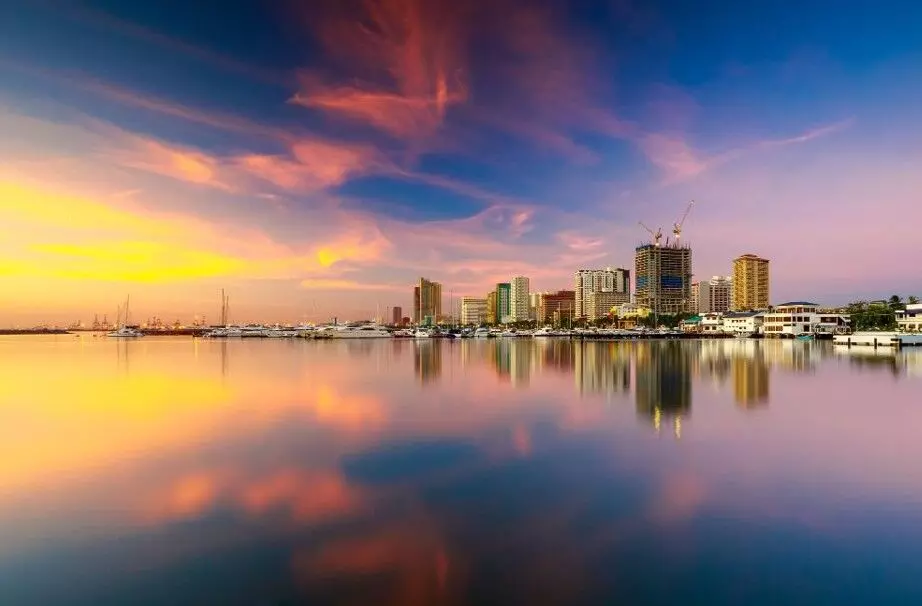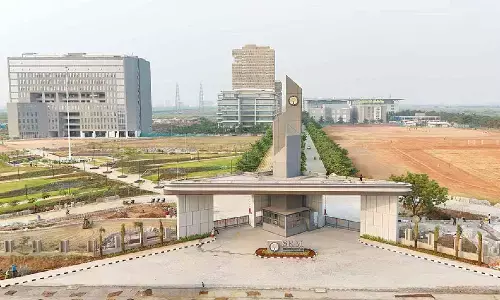How Is Employee Transportation Evolving in the Philippines?

The Philippines is a vibrant country located in the heart of Southeast Asia, with a fascinating cultural heritage and rapidly expanding economies. The country faces unique opportunities and challenges due to its major cities like Manila, Cebu, and Davao.
The daily commute plays a crucial role in both personal and professional lives, allowing people to navigate through bustling locations like Metro Manila, renowned for its high population density and busy streets.
Traffic in Metro Manila, which is one of the world's densest areas, reveals a bigger problem for the whole country: managing the mobility of over 12 million people efficiently.
According to the Philippine Department of Transportation, about 70% of working people in cities like this use a mix of public and private transportation when commuting to work.
It is important to know how employee transportation is changing in the Philippines. That will help to improve company policies and boost employee efficiency and work-life balance by providing employees with more options to commute.
Challenges in Evolving Employee Transportation
1. Infrastructure limitations: Despite increased spending on infrastructure, there remains a significant gap that hinders the development of transportation. A lot of people move inefficiently every day because of crowded roads and limited public transit options in big cities.
2. Economic constraints: A lack of funds often slows down important transportation projects. The Philippine Economic Zone Authority says that the slow pace of improvements and additions has a big effect on the number of public transportation choices and how reliable they are.
3. Resistance from traditional transport operators: Traditional jeepneys and tricycle owners are opposed to efforts to update fleets because they fear losing their jobs. Recent Land Transportation Franchising and Regulatory Board studies brought this to light.
4. Lack of integrated systems: The Department of Transportation released a study in 2022 that found it difficult to switch between modes seamlessly due to the lack of a cohesive transportation network. This could make your travel plans more difficult.
5. Environmental concerns: Most older, diesel-powered cars used in cities cause a lot of pollution. The Philippine Environment Agency found that about 75% of air pollution in big towns comes from vehicle emissions. This shows how important it is to find sustainable transportation.
Strategies for Improvement
To address the current issues with employee transportation and simplify commuting in the Philippines, numerous actions are necessary.
Robust public-private Partnerships:
Purpose: To speed up the creation and use of advanced transportation options, and make it easier for government agencies and private companies to work together.
Impact: These partnerships can leverage private innovation and public authority to make public transit systems more efficient and cover more areas. This could make traffic less crowded.
Example: Incorporating last-mile connectivity into public transit apps that work with private ride-sharing services can make your whole journey process easier and make public transportation more appealing and accessible.
Comprehensive sustainable employee transportation initiatives:
Purpose: Encourage environmentally friendly ways to commute to work, like electric bikes, bicycles, and buses.
Impact: This plan aims to not only ease traffic in cities and lower pollution levels but also motivate commuters to live healthier lives.
Example: Dedicated bike lanes and lower prices for electric vehicles can get more people to switch to these environmentally friendly choices. Businesses that offer or support environmentally friendly ways to commute can get extra help from the government, which can help even more people use these choices.
Strategic mobility management initiatives for employee transportation
Purpose: Launch strategic projects that focus on getting commuters directly involved in decision-making processes to help them deal with the transportation problems they face every day.
Impact: Commuters who work on these projects make sure that transportation solutions are not only to meet their current needs but also to meet those of the future. This method leads to transportation laws that are more environmentally friendly and user-friendly.
Example: Launching interactive digital forums and real-time feedback apps specially designed for commuters. People can use these platforms to talk about their daily commutes, suggest ways to make them better, and vote on suggested changes to transportation. The team actively uses the data gained from these conversations to better tailor services and make sure that interventions are useful and good for the community.
Advanced Traffic Management Systems for employee transportation:
Purpose: Using cutting-edge traffic control tools to improve traffic flow and reduce congestion.
Impact: Smart traffic lights, real-time traffic tracking systems, and AI-powered traffic prediction models can change the way traffic flows to reduce delays and make travel faster overall.
Example: Using adaptive traffic control systems that change signals based on real-time traffic conditions lowers commute times and the time people have to wait at crossings by a large amount.
Workplace flexibility:
Purpose: To reduce traffic during rush hours, ask companies to offer flexible work options like staggered hours and the chance to work hybrid or from home.
Impact: These steps can spread out the traffic load over longer periods, making it easier to commute during rush hours and making the journey better overall.
Example: Companies with policies that let employees start and end their workdays at non-standard times or do work from home several days a week have seen less stress from commuting and higher employee happiness and productivity.
Current State of Employee Transportation
Today's employee transport landscape in the Philippines is a mix of traditional practices and modern innovations:
● Traditional Modes: Jeepneys, buses, and tricycles remain the most common modes of transportation, but more modern and efficient alternatives are gradually replacing them.
● Modern Transit Solutions: The LRT and MRT lines have grown, giving you faster and more reliable choices. Since their recent upgrade, these systems have seen a 40% increase in ridership.
● Ride-Sharing Apps: Platforms like Grab and Angkas are becoming more popular because they make things easier and give you more options. There are 20% of the daily travelers using these services in cities.
Technological Advances Impacting Employee Transportation
In the Philippines, technology is becoming more and more important for making traveling better. Mobile apps and real-time tracking not only help you plan your trip better, but they also help you avoid the worst traffic jams.
Conclusion
As the Philippines continues to grow, efficient employee transportation methods become more and more important. You can help make traveling more efficient and fun by learning about the current situation and being a part of how it changes.
Transform Your Employee Transport Experience with MoveInSync
With MoveInSync, you can improve and streamline your company's travel options in the Philippines's fast-paced cities. Their all-inclusive platform offers custom solutions that work seamlessly with your current transportation plans, giving your workers a better way to commute.
Here's how partnering with MoveInSync can transform your approach:
1. Customized Shuttle Services: Real-time tracking and scheduling tools let you precisely manage company shuttles, making sure that employees are safe, comfortable, and on time for work, which increases their punctuality and happiness.
2. Integrated Public Transport Connections: Connect private shuttle services with public transit routes to make commutes easier. This way, employees can travel without any problems, with shorter wait times and faster routes.
3. Data-Driven Insights: Use their analytics tools to learn useful things about commuting trends and slowdowns. Based on this information, you can keep tweaking and improving your transportation services to better meet your employees' needs and cut down on costs.
4. Compliance and Safety Monitoring: With their full tracking tools, you can be sure that all of your transportation options are in line with local laws and safety standards. Maintain safe, legal, and effective methods for transporting your employees.
5. Advanced Routing Technology: You can use their intelligent routing algorithms to find the fastest routes for each journey. This technology reduces journey times and keeps traffic from building up, which makes every trip more efficient.
Take Action Today with MoveInSync
Contact them to find out how MoveInSync can help you move your employees faster, better, and more efficiently. Make your daily employees' transport commutes a positive part of the work culture, and you will see a difference in how well your business runs and how happy your employees are.
Sign up for a demo now and start your journey toward better employee transportation solutions in the Philippines.




















